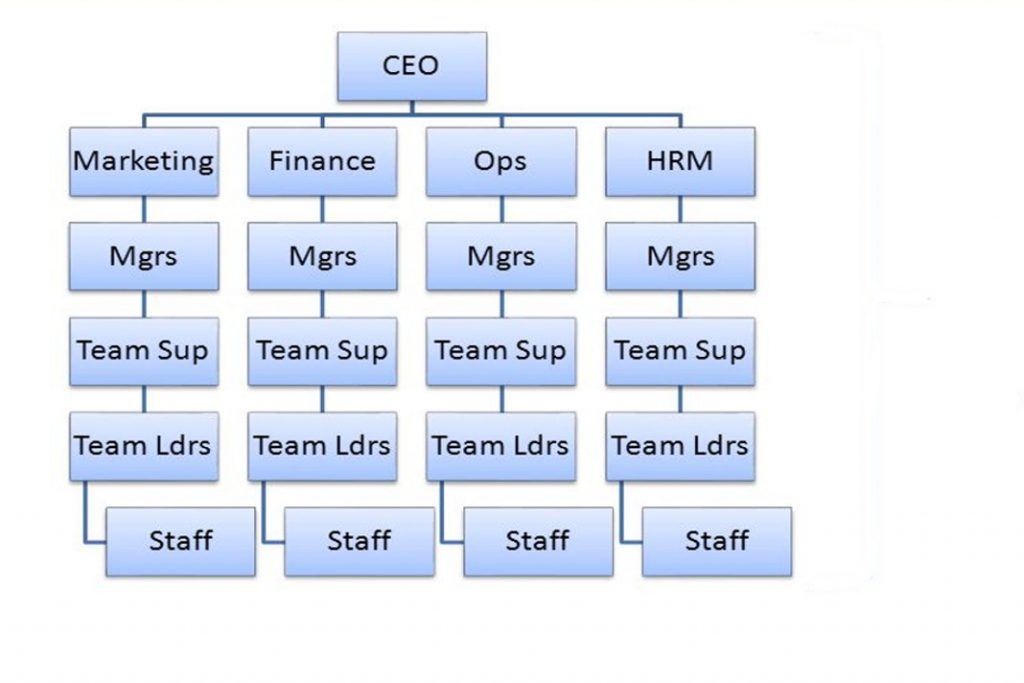The organization which constitutes of different hierarchy levels are known as the Tall Hierarchical Structure. Such organizations contain many managers but such managers are present there for a limited period of time and are in charge of a small group of their own.
But, there are other organizations, which comprises of the horizontal structure where a manager is in charge of many employees under him.
The tall hierarchical structures are more complicated and convoluted in nature. This is also a reason behind the lack of response which tends to be slower when it comes to market changes.
Purpose of tall hierarchical structure
There are various authorization levels in tall hierarchical organizations. It is composed of many middle management authorities between the top management and the employees of the organization. Such a structure is built so that the higher management of the structure takes the right decisions for the company. As it is believed that, the employees lack the levels of knowledge and proper experience to take the correct decisions for the organization.
Each of the different levels of organization builds up their own rules and regulations accordingly, where the employees have to work under immense pressure due to different rules and procedures. This process has mostly been seen slowing down the workflow process transforming it into more departmental than others.
Thus, the purpose of tall hierarchical structures is, in simple terms, not letting the low level employees take any sort of decisions regarding the organization which comes mostly from internal controls of the structure.

Hierarchy
The hierarchy levels of tall organizations are many. They contain various levels of management in the company. The President is the highest position in any such organizations. This position consists of the final authority. The lowest level of hierarchy includes the employees who do not have any managerial experience or authorities. Such employees are answerable to the first managerial position. Each manager those are assigned to the position is answerable to the next level of managers above them.
Employees
The employees of the tall hierarchical organizations are well trained and supervised. As the managers are in charge of such a small number of employees to supervise and train, so, it becomes easier for them to give them the right guidance individually. Because of the small number, the percentage of promotions and career growth lines are also clear.
However, apart from having such great opportunities, the employees face a pretty tough time in these tall organizations. The reasons behind it are the rigid rules and regulations which they have to follow in a strict manner. There are many layers of legislative procedures in the process.
Costs
The tall organizations face higher costs as compared to the other hierarchical structures. One of the reasons for such large expense is the huge number of managers and supervisors available in the company. Due to more heads present in the company, more time is taken all over to conclude a decision when it comes to decision making, which may be another reason behind the higher costs.
Communication
When it comes to communication in between the tall hierarchical structures it is very complex in nature. Due to the many layers of management available in the organization, there is a fine line present in the structure. But decision making is slowed down due to the need for approval from the higher management. As the authority moves upwards from the lowest in the chain of management, then the managers and the employees have a communication problem in terms of direct communication with the higher management.
The advantages and disadvantages of Tall Hierarchical Structure are as below:
Advantages
- There is a good relation between the managers and the employees.
- Due to less number of employees under each manager, it helps to closely supervise them and decide which one has an outcome of thegood performance.
- The higher level authority gets more time to make decisions regarding the organization.
- Due to the number of employees; the development of staff is encouraged in the best way.
- Mutual trust lies between higher management and lower management
- The ability to control and supervise the team properly becomes easy and convenient.
Disadvantages
- Due to different levels, the communication flow is not smooth enough, which makes communication a slow process.
- Because of the strict supervision of the managers, the employees do not get any freedom of their own.
- It is very costly due to the higher number of managers present.
- The decision making is time taking.
- Managers are dominating.
One may go for the tall hierarchical structure after going through the pros of it but it completely depends upon the nature of the business and the method of serving the process to customers. The best way is to visualize the organization first. But a tall hierarchical structure is not suitable for standardized or routine jobs.
